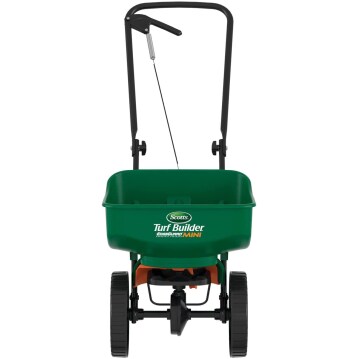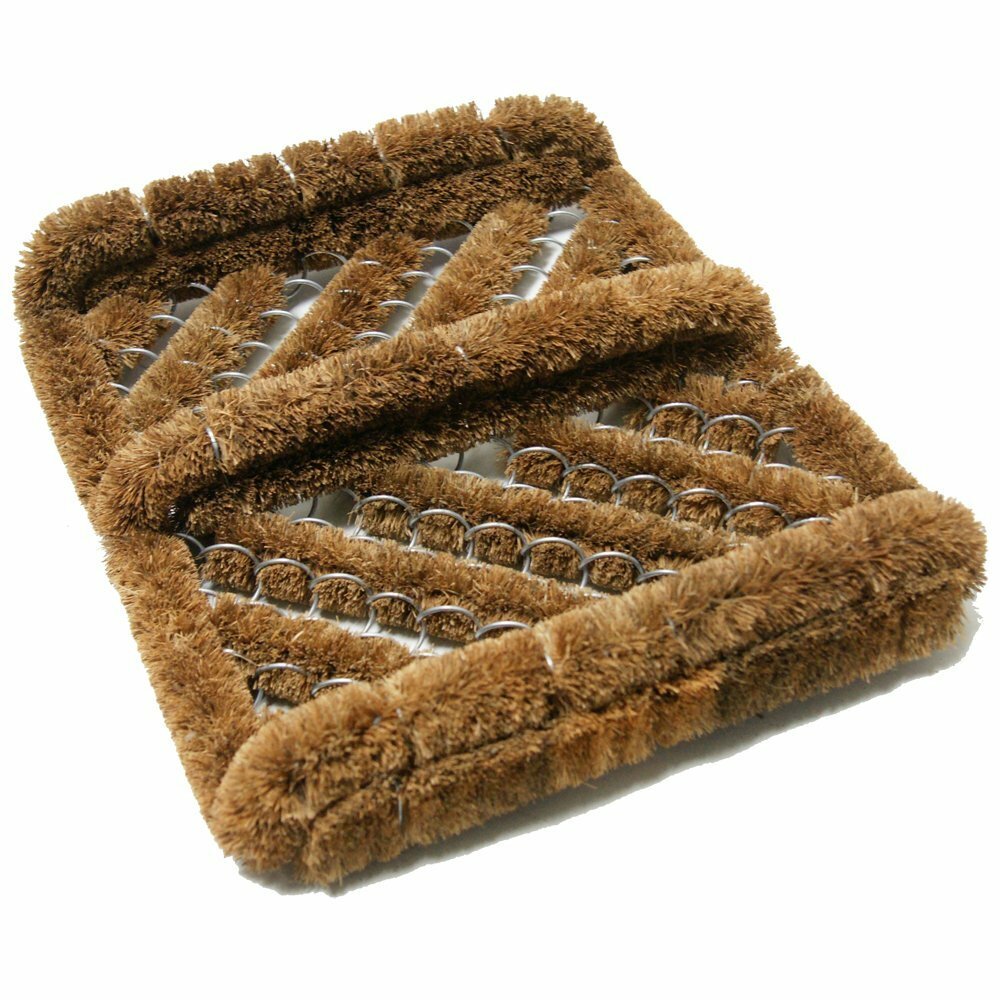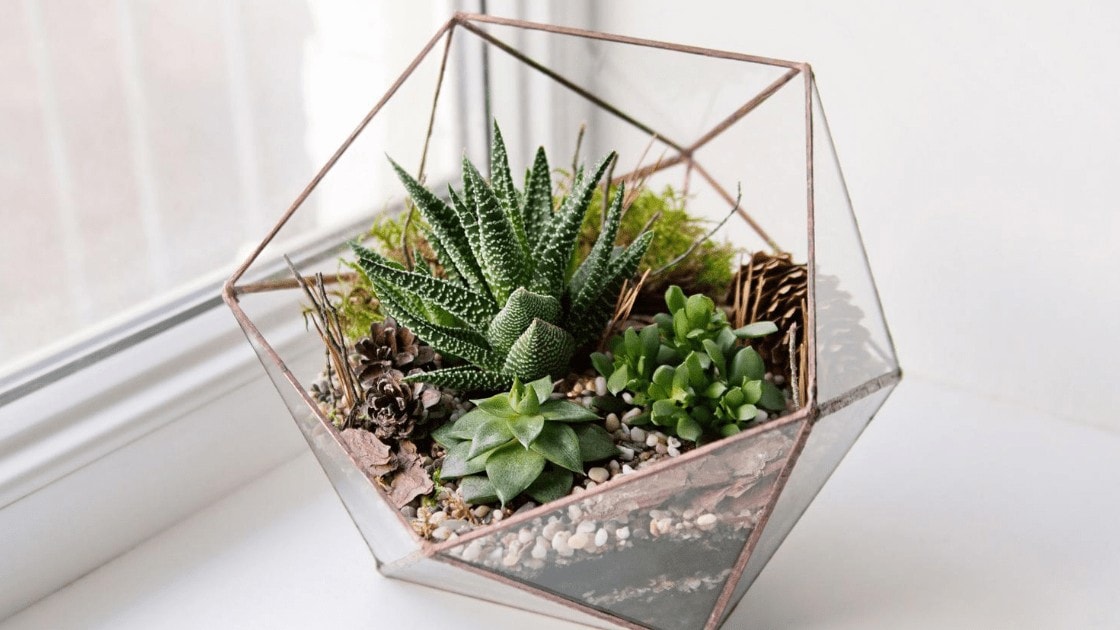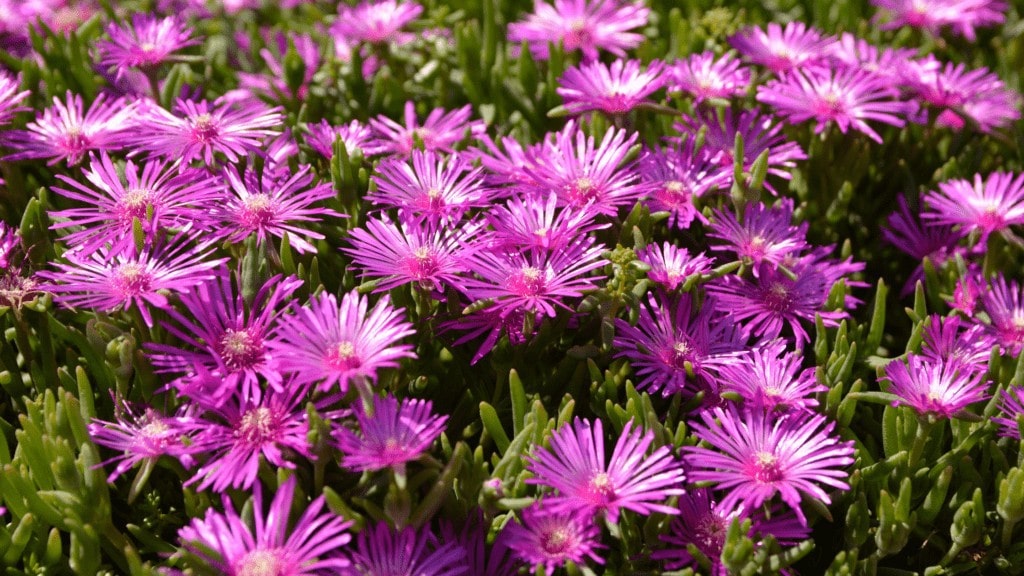
Pink ice plants (Oscularia Deltoides) are one of the easiest succulents to grow – they require very little care, grow relatively fast and with their colorful and vibrant flowers can add liveliness and color to any garden. They can be grown both outdoors and indoors and only require sufficient light and modest watering in order to thrive and produce a large number of beautiful pink flowers all summer. They can be easily propagated from stem cuttings and don’t require any fertilization.
Let’s take a deeper look at the origin of pink ice plants, how to take care of them, how to propagate them and how to grow them outdoors as well as indoors!
Description and Origin Of The Pink Ice Plant
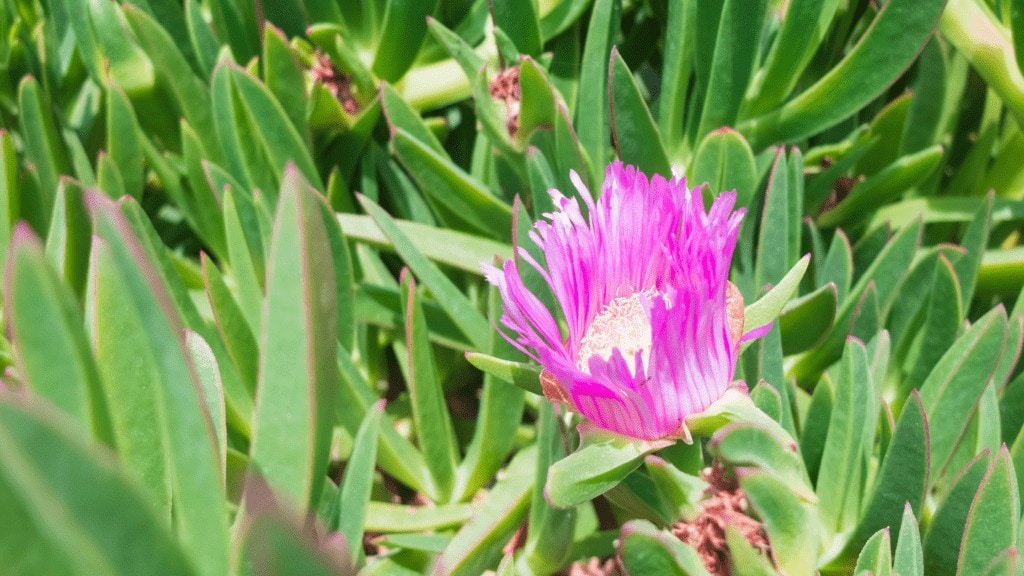
The Pink Ice Plant (Oscularia Deltoides) is a low-growing succulent shrub and is a common ornamental plant all around the world. It belongs to the ice plant family (Aizoaceae), which contains about 1800 species, many of which have leaves covered in tiny, light-reflecting hairs.
Browse our Affiliate Products
In bright sunlight, those hairs resemble ice crystals, which of course is where ice plants get their name from. The pink ice plant doesn’t really develop those shiny hairs, but because of its leaf and flower structure, is still classified as being part of the ice plant family.
Although the ice plant family contains many different-looking succulents (even including the popular living-stone plant), they all produce similar-looking, daisy-like flowers.
The pink ice plant is no exception – during the summer, it produces a large number of beautiful, pink or magenta flowers that cover the whole plant canopy. The plant has pyramid-shaped, silver-green leaves that aren’t prickly. Given sufficient light, the edges of the leaves take on a beautiful soft pink color.
Taking Care of Pink Ice Plants
As is the case with most succulents, the pink ice plant thrives in warm, dry conditions and doesn’t require any special care – a well-draining potting mix, combined with minimal supplemental watering during the hottest summer months will generally keep your plant very happy and flowering all throughout the summer.
Light Requirements
The pink ice plant has similar light requirements to most other succulents. If you want it to grow well, spread as much as possible and produce a large number of beautiful flowers, you’ll have to give it direct sunlight.
The plant can survive in poorly-lit indoor areas almost indefinitely, but you won’t notice much growth, and the leaves won’t take on their characteristic pink coloring around the edges. The flowering stage requires a lot of energy and without a sufficient amount of direct sunlight, the plant will produce only a few flowers.
For product information on grow lights, check out these grow lights that amazon offers below.
Optimal Temperature
The pink ice plant likes warm weather and will thrive in most sunny locations, provided that the nighttime temperature during winter doesn’t drop below freezing. Although some sources claim that the pink ice plant can tolerate temperatures as low as 15F (-9C), if you live in an area with sub-freezing winter temperatures, it’s recommended that you keep the plant in containers, and move them back inside when the temperature drops more than a few degrees below freezing. The natural habitat of this succulent is south-west Africa, where the temperatures rarely dip below 40F(4.4C). Its actual frost tolerance depends on many factors, including its planting location and the humidity levels.
Soil Requirements
In its natural habitat, the plant grows in rocky, dry areas, so it likes a well-draining soil that will allow plenty of air to reach the roots – even after watering. A mixture of equal parts cactus potting mix and sand works well, but the plant can also thrive in a cactus potting mix only, or a mixture of equal parts cactus potting mix, sand and perlite.
If your interested in more reading about soils, check out our article below.
Where to Plant
If you live in an area where the temperatures don’t drop below freezing, you can plant your ice plant directly outside, in a bed covered with cactus potting mix, diluted with some sand to ensure proper drainage and root aeration.
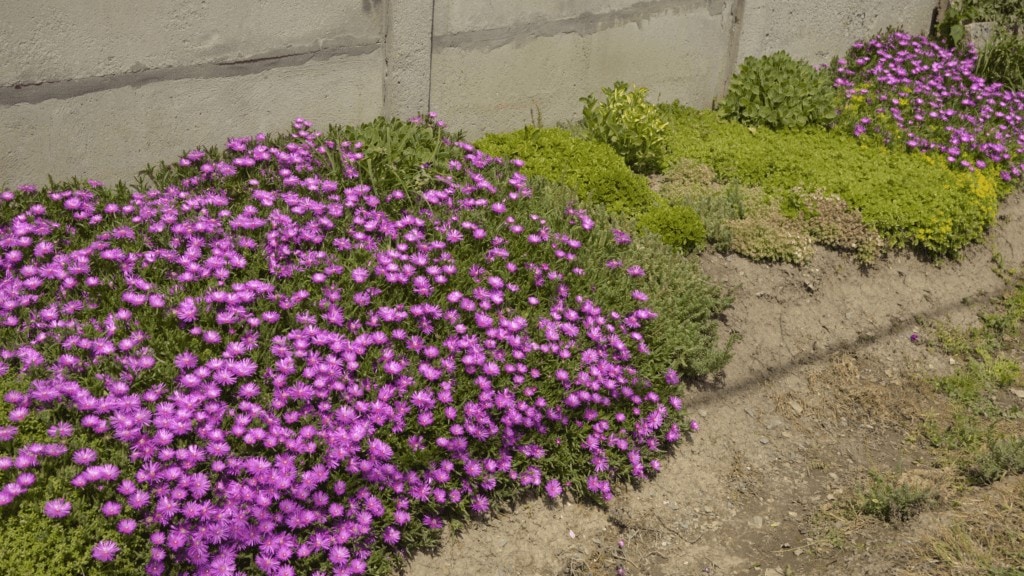
The pink ice plant is most commonly planted in containers – large containers will give you the best results, producing a large area of flower-covered canopy during the summer. It’s best to position the plant in direct sunlight.
Propagation
Pink ice plants are easily propagated from stem cuttings. Here is an overview of the cutting rooting process:
- Take a cutting. Any piece of the stem that contains a few leaves will work. Larger cuttings will generally root faster, because the cutting has a larger photosynthesizing area and can muster up the energy necessary for producing roots much quicker.
- Let the cutting dry for around two days. This is a standard step for succulent cuttings. By doing this, we are ensuring that the cut end of the stem dries and develops a thin layer of dead tissue. If we stick the cutting in a wet potting mix without a drying period, there’s a much higher chance of experiencing rotting problems. You can also dip the end of the cutting in some rooting hormone, but this is optional.
- Stick the cutting in some cactus potting soil. Make sure to bury the cutting deep enough – an inch or so is perfect.
- Give it indirect light and wait. Because our cutting has no root system yet, direct sunlight will quickly dry it out and kill it. But we still want it to photosynthesize and produce the energy necessary for producing roots. Indirect sunlight works well, but you can also place the cutting under artificial lighting. LED grow light are perfect, because they radiate very little heat, while providing the plant with all the light it needs.
That’s it! In about three to seven weeks, the cutting will have started developing roots and you can slowly start acclimatizing it to direct sunlight. If the plant shows signs of wilting, leaf shrinkage or browning, this means that its root system is not yet ready to transport enough water to deal with the heat – take it back to an area with indirect sunlight and give it a few more weeks.
Or if you want to start from seed or grown, Amazon offers some great choices.
Can You Grow Pink Ice Plants Indoors?
The only problem with growing ice plants indoors is the lower light intensity. Outside, the pink ice plant can cover an indefinitely large area, being limited only by the terrain. Inside, your ice plants will usually remain small and will grow extremely slowly. This can be a good thing – the plant can be kept in a tiny pot on your window sill or on your desk without outgrowing the container.
Keep in mind that a drop in nighttime temperatures is a trigger for flowering, so it can sometimes be a challenge to get an indoor-growing ice plant to bloom.
Also we have an article about the different types of pots and their uses.
Cutting Back & Pruning
Cutting back ice plants is generally not necessary, but it can keep your plant canopy tidy. Make sure to cut any dead branches, which can be caused by frost or by mechanical wounding.
With many plants, it’s recommended that flowers be removed immediately after wilting in order to stop them from sucking additional energy. However, this doesn’t appear to be as important when it comes to ice plants.
Watch Out For Browning Leaves
If the leaves of your ice plant start turning brown, this usually signals heat shock or sun damage. This can happen if you move your rooted cuttings outside in the sun too soon.
The same applies to ice plants that you’ve just purchased – if their leaves turn brown, this means that their root system is not yet used to the water demand of being outside in the heat.
This problem can be solved by gradually acclimatizing the plants to the sun by first placing them in partial shade for a week or two. Insufficient watering can also lead to leaf browning.
For more information on Pink Ice Plants and Ice plants in general check out this site.
gardenia.net/plant/delosperma-wheels-of-wonder-hot-pink-wonder-ice-plant
How Big do Pink Ice Plants Get?
The pink ice plant can reach a maximum height of around 10 inches, but has a tendency to cover a large area – when grown outdoors in a large pot, its canopy will eventually start ‘pouring out’ of the container and over time can completely cover and obscure the pot.
This is often a desirable, visually-pleasing effect, especially for stone gardens. In a tiny pot, the pink ice plant can be kept as a small, window-sill succulent for a long time.
When do Pink Ice Plants Bloom
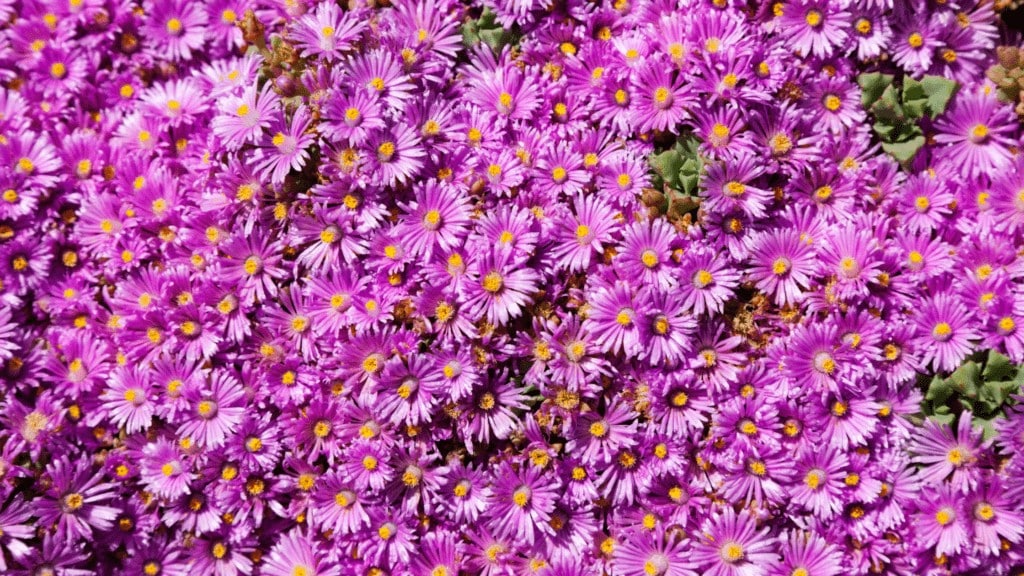
The pink ice plant flowers throughout the summer. There are many complex mechanisms involved in signaling the plant that it’s time to bloom.
Generally, an increasing difference between the nighttime and the daytime temperature tells the plant that it’s time to start reproducing. Keep in mind that the plant needs to reach maturity and build up a large enough leaf canopy before it can flower.
If you have a plant that is not blooming and you want to make it bloom, your best bet is to put it in a colder place during the night and a warmer place during the day. However, there isn’t really a proven and repeatable way to induce flowering, as there are too many factors involved.
Are There Other Species of Ice Plants That Flower in Different Colors?
As we already mentioned, the ice plant family contains around 1800 species. Unfortunately, there isn’t an exact visual replica of the pink ice plant that blooms in other colors.
However, there are other similar shrub-like ice plant species with flowers that come in different colors. Specifically, the Delosperma genus contains about 100 plants and has species that flower in white, yellow, purple, orange and different nuances and mixes of those colors. Seed mixes that contain a random mixture of colors are commonly sold.
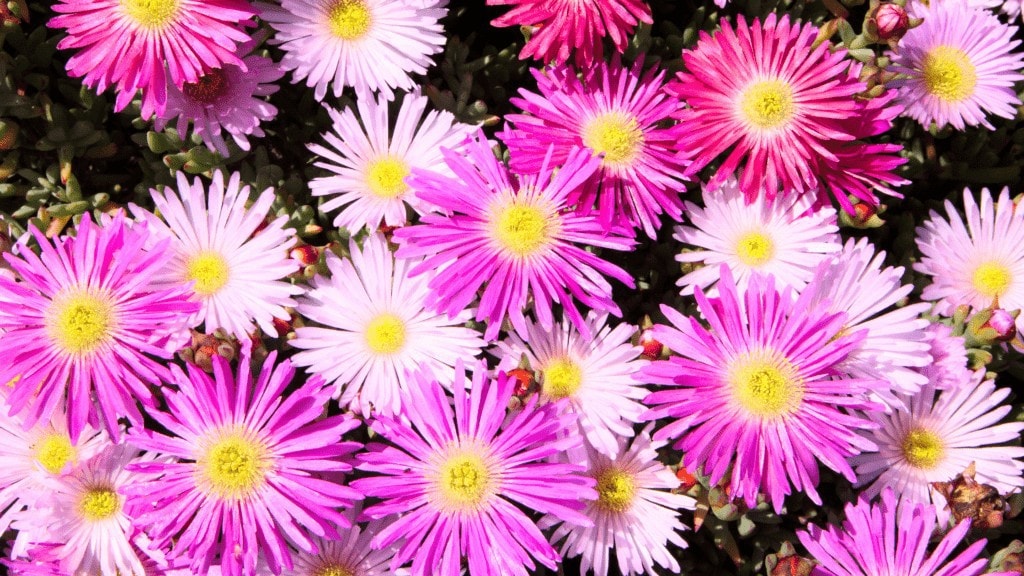
The Delosperma genus has flowers that are shaped almost identically to those of the pink ice flower. However, its leaves aren’t as ‘succulent-like’, which can make it less interesting for succulent lovers to grow.
Conclusion
As you can see, Pink Ice Plants are relatively easy to care for with minimal effort. They can be grown inside as well as outside while providing beautiful flowers as long as they are provided with warmth and sunlight. If you’re a newbie in the gardening game, this succulent is a good place to start. Happy Gardening.



